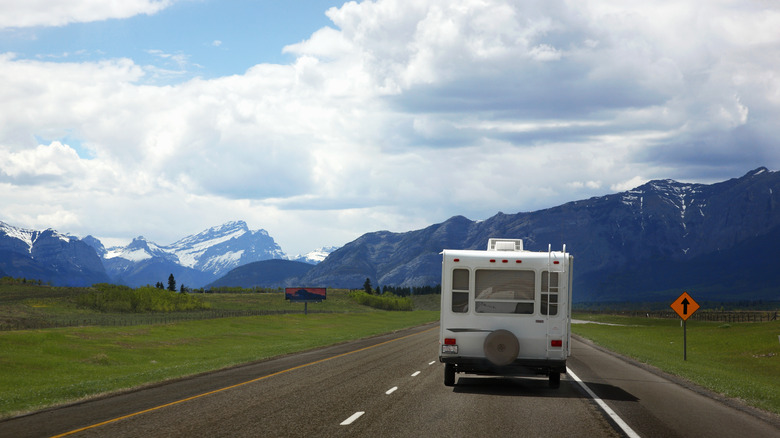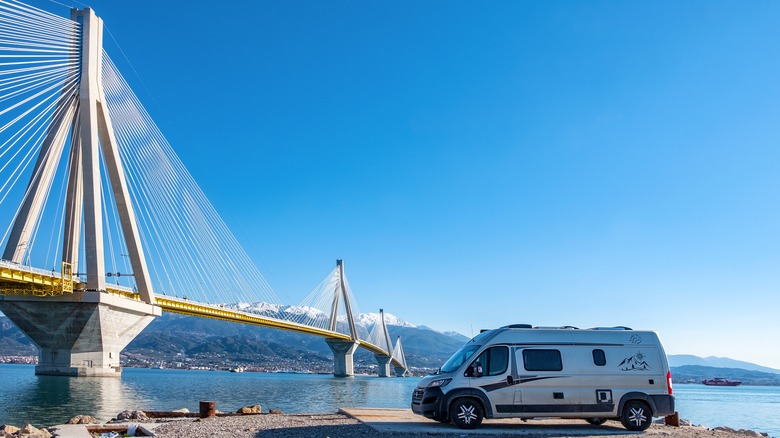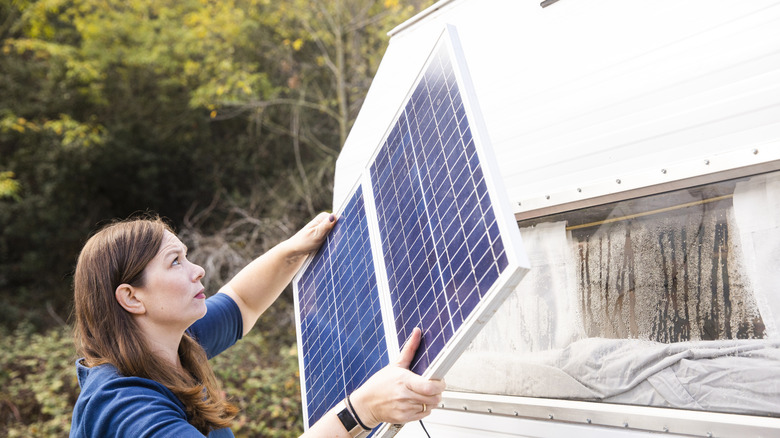The RV Mistake That Could Derail Your Entire Trip
RVs present an unparalleled way to travel across diverse landscapes, from bustling highways to windy mountain roads. They can adapt to whatever you desire, whether you're looking for family bonding on cross-country road trips, serene escapes in picturesque camping sites, or the thrill of uncharted explorations. And while they can be an easy, versatile option in making travel plans, they aren't the most straightforward, versatile vehicles to drive.
Not only does their length make them difficult to maneuver as a driver, but their height can also pose a handful of challenges while on the road. Overpasses, bridges, and tunnels have height limitations, and attempting to pass through them with an oversized RV can have disastrous consequences. Before you head out on the road, you'll want to know your vehicle's height exactly to avoid serious hazards while en route. Eyeballing it and relying on your general estimations will not cut it.
What happens when you underestimate your RV's height
Most overhead structures will be marked with their height limitation. If you are unaware of your RV's height or fail to pay attention to these signs, you risk some severe consequences. These limits can appear in campsites, on the freeway, and more. You could rip the roof off the car, causing serious damage to the vehicle or injuring the passengers aboard or on the road. This kind of accident will require you to deal with a handful of headaches, not to mention derailing the trip you planned.
Moving forward, it will likely look like lots of paperwork and costs involving your insurance company, your rental company (if you used one), the local police, any additional drivers you may have impacted, a mechanic, and more. Talk about a buzz kill.
Even if you don't face bridges or overpasses, some areas of the country have legal height limitations for their traffic. You'll want to research the states and counties you plan to drive through and determine their requirements to avoid facing legal penalties. So, if you do anything before you head out for your RV trip, make sure to get an accurate measurement of your RV.
How to avoid these RV mistakes
Unfortunately, you can never guarantee the road will be 100% safe or crash-free. But, with just a little forethought, you can make sure that you don't smack your RV's roof into any overhead structures. Although most RVs reach about 13 feet and 6 inches in height, you'll want to check with your RV manufacturer for accurate sizing.
In addition, it is crucial that you take into account any add-ons you have extending from the top of the roof. This means any air conditioning units, UV panels, etc. This is an easy detail to forget, especially when drivers add equipment to keep their RVs cool in the summer.
Once you have added up the total height of your RV, you'll want to make sure you have it written down somewhere so you don't forget it. TikTok user @rvcanucks provided the perfect hack, suggesting you keep a note conveniently tucked inside your sun blocker. Our last piece of advice is to download a GPS app specifically made for RVs. These will make it ten times easier to plan a successful RV trip, providing routes that avoid any height restrictions your RV isn't compliant with.


